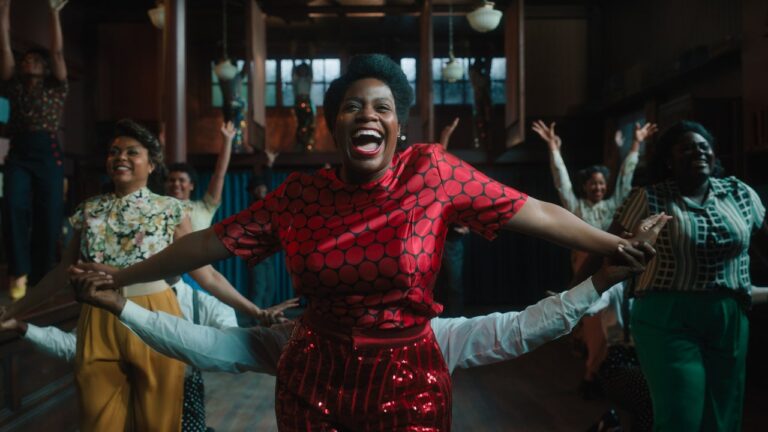
Few trendy literary works are as enduring as The Color Purple, Alice Walker’s Pulitzer-winning 1982 novel. It was tailored into a beloved, if additionally criticized, Steven Spielberg movie in 1985, after which twenty years later turned a stage musical—which might, ten years after that, get pleasure from a celebrated revival in London and New York. The story of a Georgia lady, Celie, who perseveres by the early a part of the 20th century as time and circumstances beat her down, The Color Purple has for over 4 many years served as a beacon of hope, and inspiration, in tough days. (Which is to say, all days.)
Now the stage musical has itself develop into a movie, opening in theaters Christmas Day. Directed by Ghanaian polymath Blitz Bazawule (he’s a singer, songwriter, director, producer, visible artist, and extra), The Color Purple offers those that didn’t have a likelihood to see the stage present a style of what the fuss was about again in 2005 and 2015. (And through subsequent nationwide excursions.) That is all the time the beneficiant work of even probably the most unsuccessful movie diversifications of musical theater: they dramatically decrease the barrier to entry. Given the extreme devotion to The Color Purple and the brand new movie’s prime place as a vacation launch, there are excessive hopes that a large field workplace smash is within the offing.
And sure, the movie might be robust sufficient to catch word-of-mouth fireplace. It’s an adaptation that sands narrative edges and rushes by issues, but additionally captures a spirit common to all Color Purple iterations, whereas offering a sturdy showcase for the rousing songs written by Brenda Russell, Allee Willis, and Stephen Bray.
A lot of Bazawule’s movie feels supplemental, like a tuneful companion piece for somebody at present studying, or already intimately conversant in, the novel. Lots of Walker’s trickier themes—most prominently the e book’s queer subplots—are barely current within the movie. However the primary beats, introduced at a clip, are roughly the identical. A younger Celie (Phylicia Pearl Mpasi) is separated from her sister, Nettie (Halle Bailey), when Celie is married off to a merciless landowner identified principally as Mister (Colman Domingo). A long time go by, as Celie (now performed by Fantasia Barrino, who did a extremely lauded stint within the position on Broadway) negotiates a tough life with Mister, pining away for a sister she thinks she might by no means see once more.
Celie’s life is enlivened by the arrival of two formidable ladies: blues singer Shug Avery (Taraji P. Henson) and Sofia (Danielle Brooks, a Tony winner for the Broadway revival), the spitfire spouse of Mister’s son, Harpo (Corey Hawkins). These ladies open Celie’s eyes to the opportunity of life, ultimately empowering her to strike out on her personal and stand agency in her sense of self. These evolutions are made most potent in music, notably “I’m Right here,” the towering eleven o’clock ballad delivered forcefully by Barrino. This Color Purple is extra about how the songs mirror a well-known story moderately than the story itself.
Which may make the movie appear skinny. We spend a lot of our time admiring the thorough performances—Domingo’s purring villainy, Henson’s horny glide complemented by kindness—however in any other case ready considerably impatiently for the subsequent music to start. (13 numbers from the stage present have been lower for the movie, however there are nonetheless lots to get pleasure from.) In that manner, Bazawule’s movie performs like a sequence of linked musical moments within the vein of a visible album, full with sun-dappled imagery and kinetic camerawork. Those that actually need to dwell in each granular element of Celie’s journey towards actualization might discover this model missing.
However these there for large numbers belted with aptitude might be glad. “I’m Right here” offers the anticipated chills, whereas Brooks tears into the barn burner “Hell No” with a shrewd stability of comedy and severe anger. The reprise of the title music, sung on the movie’s poignant however maybe too tidy finish, is one other beautiful sequence. Barrino’s voice is without delay delicate and strong, flecked with scratch and reediness earlier than blooming into full-throated plaint. One feels the ardency of Barrino’s connection to the position, which is of significant significance in a movie that’s usually surprisingly glancing, quick, cursory.
Maybe it was the movie’s deliberate calculation that everybody is already so conversant in The Color Purple that this model might perform most effectively as a song-delivery system. That premise is borne out to a point, however one nonetheless yearns for Bazawule to decelerate and let the viewer take within the texture and heartbeat of the piece. Whereas grandly transferring on the shut, an excessive amount of of this Color Purple depends on recollections of Color Purples previous.